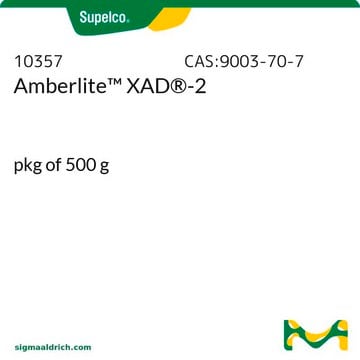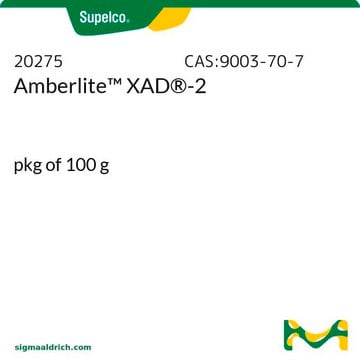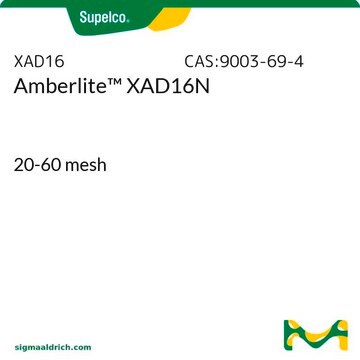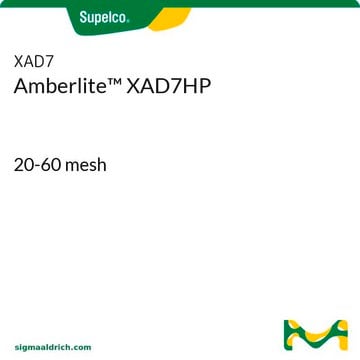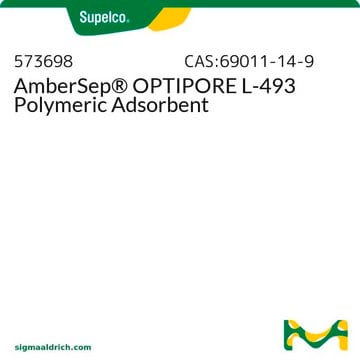20279
Supelpak™-2
matrix styrene-divinylbenzene, 20-60 mesh, jar of 100 g
Sinónimos:
XAD®-2
About This Item
Productos recomendados
agency
ASTM® D6209
EPA 10,20,23,23A,TO-13A
description
purified XAD-2
form
beads (small)
packaging
jar of 100 g
parameter
200 °C max. temp.
technique(s)
GC/MS: suitable
LPLC: suitable
surface area
~300 m2/g
matrix
styrene-divinylbenzene
matrix active group
polymer
particle size
20-60 mesh
pore size
~0.65 mL/g pore volume
90 Å mean pore size
density
1.02 g/mL at 25 °C (true wet)(lit.)
1.07 g/mL at 25 °C (skeletal)(lit.)
application(s)
environmental
separation technique
reversed phase
¿Está buscando productos similares? Visita Guía de comparación de productos
General description
Application
Legal Information
Storage Class
11 - Combustible Solids
wgk_germany
WGK 3
flash_point_f
Not applicable
flash_point_c
Not applicable
ppe
Eyeshields, Gloves, type N95 (US)
Elija entre una de las versiones más recientes:
¿Ya tiene este producto?
Encuentre la documentación para los productos que ha comprado recientemente en la Biblioteca de documentos.
Los clientes también vieron
Contenido relacionado
La cromatografía de líquidos de baja presión (LPLC) es una técnica cromatográfica que funciona a bajas presiones impulsando la fase móvil a la columna que contiene una fase estacionaria mediante la acción de una bomba.
La cromatografía de líquidos de baja presión (LPLC) es una técnica cromatográfica que funciona a bajas presiones impulsando la fase móvil a la columna que contiene una fase estacionaria mediante la acción de una bomba.
Low pressure liquid chromatography (LPLC) operates at low pressures, using a pump to drive the mobile phase onto the column.
La cromatografía de líquidos de baja presión (LPLC) es una técnica cromatográfica que funciona a bajas presiones impulsando la fase móvil a la columna que contiene una fase estacionaria mediante la acción de una bomba.
Nuestro equipo de científicos tiene experiencia en todas las áreas de investigación: Ciencias de la vida, Ciencia de los materiales, Síntesis química, Cromatografía, Analítica y muchas otras.
Póngase en contacto con el Servicio técnico